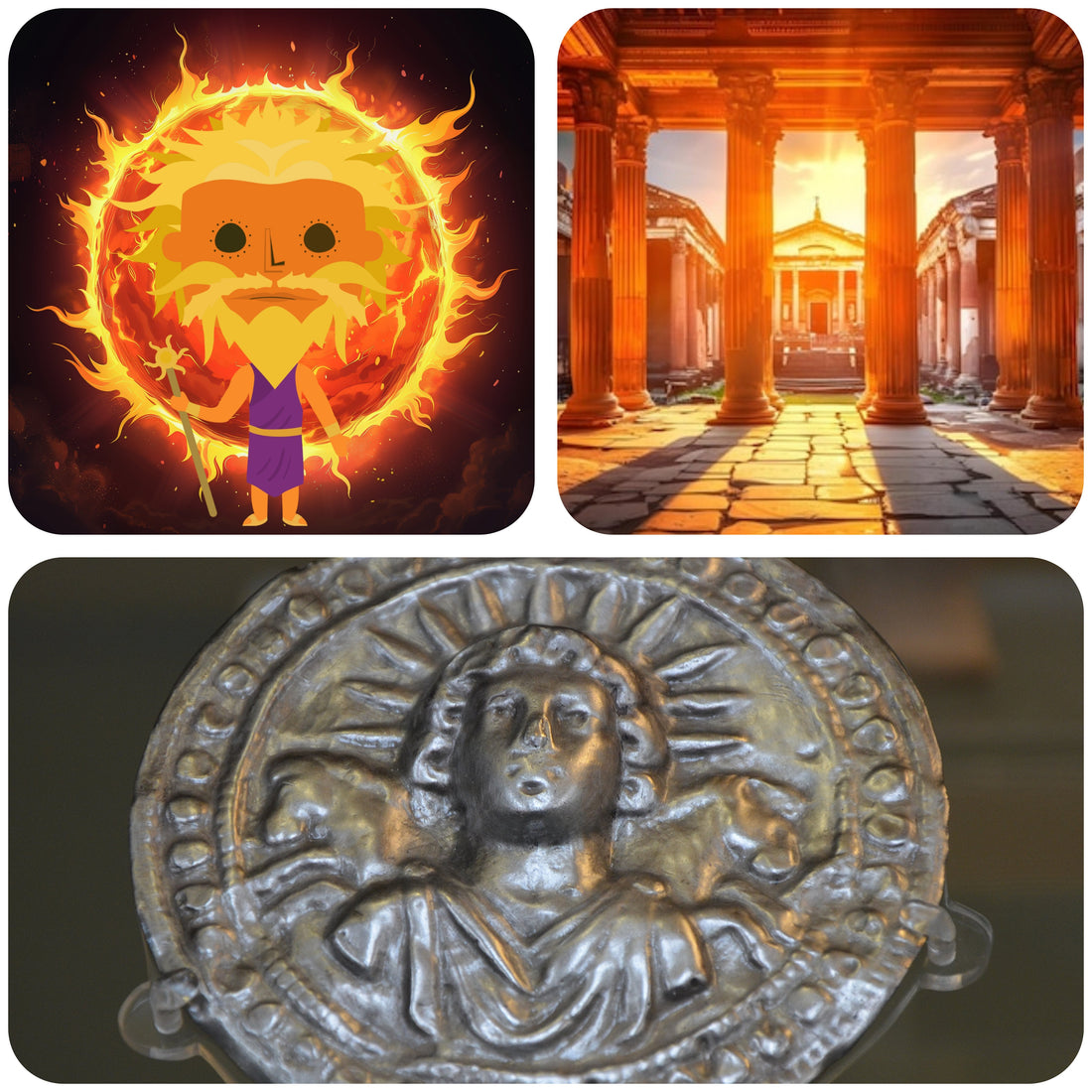
Sol Invictus: The Unconquered Sun of Rome
Share
In the pantheon of ancient Roman deities, one god stands out for his radiant symbolism and enduring mystery: Sol Invictus, the “Unconquered Sun.” A later addition to the Roman religious landscape, Sol Invictus emerged not only as a divine personification of the sun but also as a potent symbol of imperial unity and eternal power.

Origins and Rise of the Invincible Sun
While the worship of solar deities was not new in Rome—earlier gods like Sol Indiges had been venerated—Sol Invictus represented a distinctive religious development. His cult was officially introduced by Emperor Aurelian in 274 CE after his successful campaign in the East, where he had encountered and been inspired by solar worship in regions like Syria.
To honor this celestial deity, Aurelian dedicated a grand temple to Sol Invictus in Rome and established a new priesthood, the pontifices Solis. The god’s image began to appear prominently on imperial coinage, emphasizing the sun's divine favor upon the emperor and the empire.
Symbolism and Iconography
Sol Invictus was often depicted as a youthful, radiant figure crowned with rays of light, riding a chariot across the sky—imagery inherited from earlier Greco-Roman traditions of Helios and Apollo. He embodied light, vitality, and order, cutting through the chaos of night and darkness.
The title "Invictus" or "Unconquered" signified not only the sun’s daily victory over darkness but also the resilience and indomitability of Rome itself. The god became a powerful emblem of continuity and divine sanction for the imperial system.
December 25 and Christian Connections
One of the most intriguing aspects of Sol Invictus is his festival, Dies Natalis Solis Invicti—the “Birthday of the Unconquered Sun”—celebrated on December 25. This date, near the winter solstice, marked the return of longer days and was associated with the sun's “rebirth.”
Some scholars have argued that the choice of December 25 for the celebration of Christ's birth in Christian tradition may have been influenced by this pre-existing solar festival. Whether as a conscious appropriation or a symbolic overlap, Sol Invictus played a role in shaping the cultural landscape from which Christmas emerged.
Legacy of the Invincible Sun
Sol Invictus was one of the last major deities to gain prominence in Roman religion before the rise of Christianity. While his cult faded as the empire Christianized in the 4th century, his iconography and solar symbolism persisted in various forms—eventually influencing Christian art and liturgy.
Today, Sol Invictus remains a fascinating symbol of Rome’s spiritual evolution. As both a literal and metaphorical light in the ancient world, he continues to captivate historians, theologians, and modern seekers of ancient wisdom.